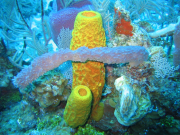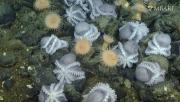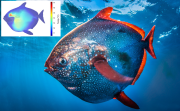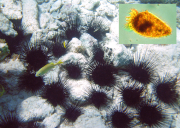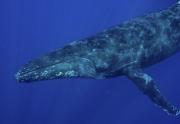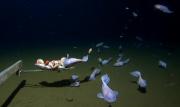Sometimes scientific discoveries answer questions scientists have wondered about for years, but more often, a discovery simply raises dozens of new questions to explore. For example, why on earth do dozens of female great hammerhead sharks gather at two atolls in French Polynesia around the full moon each summer? While we don’t know the reason right now, the observation opens the door to more research to uncover the mysteries of this severely endangered species.
Articles
The Marine Science Institute's monthly column, Science and the SeaTM, is an informative and entertaining article that explains many interesting features of the marine environment and the creatures that live there. Science and the SeaTM articles appear monthly in one of Texas' most widely read fishing magazines, Texas Saltwater Fishing, the Port Aransas South Jetty newspaper, the Flour Bluff News, and the Island Moon newspaper. Our article archive is available also on our website.
Every time you sneeze, your body is taking the opportunity to violently eject allergens, viruses, bacteria, chemicals or other particles trying to invade your nose that don’t need to be there. It’s waste that might even make you sick if your body didn’t force it out. But what if sneezing was also how you cleaned your entire body, like taking a shower? That’s how ”sneezes” are for sea sponges. And the sponges take their time with their body-cleansing too—up to half an hour for a single sneeze!
It’s no longer just a popular Beatles song—off the coast of central California, nearly two miles under the sea, is a “garden” of at least 6,000, and possibly up to 20,000, purple octopuses known to scientists as Muusoctopus robustus. Scientists first discovered the site about five years ago but needed time to investigate what led so many octopuses to congregate around Davidson Seamount, an extinct underwater volcano about 80 miles southwest of Monterey, California.
You might remember learning that mammals and birds are warm-blooded, meaning their bodies can generate heat to maintain a fairly constant body temperature, while fish, reptiles and amphibians are cold-blooded, relying on heat from the environment since they cannot regulate their body temperature on their own. But then, you’ve probably also learned that there’s nearly always an exception to every rule. Deep under the sea, that exception in the fish world is the opah.
In the middle of the COVID-19 pandemic, another epidemic began under the waves of the Caribbean Sea, extending from the coast of Florida to the northern coast of Venezuela. Starting in January 2022, long-spined sea urchins began losing their spines and dying off by the thousands. This species had already nearly disappeared during a massive die-off in 1983-84, when the population fell by about 98%. Scientists never figured out why the die-off happened, but the event had dire consequences, since these sea urchins eat algae that otherwise grow out of control and destroy corals.
The news was abuzz in June with reports of orcas ramming boats, but this wasn’t the first time groups of killer whales—which are actually members of the dolphin family—have rammed boats. A similar flurry of boat-ramming by orcas occurred in October 2022, for example, though scientists have not yet figured out why these marine mammals are doing this.
It’s not just whales that migrate thousands of miles across the seas. The songs they sing can cover long distances too. Several recent studies reveal more insight into the hauntingly beautiful and complex musical arrangements of male humpback whales, including just how far the repeating “themes” of their songs can travel.
As you go further and further into the ocean’s depths, you pass through different zones named for the increasing darkness, from the sunlight zone to the twilight zone, to the midnight zone, to the abyssal zone, to the absolute deepest points in the oceans—the hadal zone. The hadal zone is named for Hades, the Greek god of the underworld, and it stretches from 20,000 feet to as deep as 36,000 feet—nearly 7 miles—below the surface, at the bottom of the deepest trenches.
Many marine creatures are monogamous, from butterflyfish and French angelfish to mantis shrimp and seahorses. But even monogamous species may have a wandering eye at times. That seems to be true for the pajama cardinalfish, a small coral reef fish found throughout the western Pacific Ocean. It’s best known for the males storing fertilized eggs in their mouth until the offspring are ready to leave.
A colony of garden eels often looks at first like sea grass swaying in the current—until you get closer. As you approach, you might get a glimpse of the big googly-like eyes on either side of their pencil-thin bodies before they disappear into the safety of their burrow. Though social animals, each eel remains rooted to the burrow its muscular tail carved out of the sand. Glands in their skin secrete a mucus that fortifies the sand around their burrow and seals the entrance when they dart in to avoid danger.


